 |
|
| Issue #120 • November/December, 2009 |
I was freezing when I slipped into my old down-filled Army sleeping bag. But I was used to the drill. I’d just lay there motionless as a mummy for five minutes until my body heat warmed up the inside of the bag. I counted through chattering teeth to see exactly how long it would take before my bare skin could touch the lining without recoil. I could have softened the shock by staying in my clothes, but I was comfortable sleeping naked, and I slept soundly. It wasn’t a long wait, and then I could let my mind wander. I’d be like a dreamy kid in his warm bed, protected against the cold, damp Oregon night.
The year was 1986. I was encamped across Spring Creek from my Oregon cabin, what there was of it—a perimeter concrete footing, a subfloor, and one naked 2×4 fir wall I had erected that day. Gerry Barry, my neighbor, had loaned me an old pickup camper that had been sitting in his ranch dump. I had left my 26-foot Komfort trailer 670 miles south in Southern California because the eight-mile dirt road into my emerging homestead was too muddy and snowy to get it through. I had left my daughter, Annie, who was then 4, behind too, at her mom’s house. Annie came up in the dead of winter only when I could bring the trailer so she’d be warm. But Gerry’s camper worked fine for me. It had no heat or other amenities, but it was cozy, and downright wonderful on a night like this when the Oregon damp settled on everything like a cold wet blanket.
|
In the morning I would have another drill: I’d awake refreshed but mindful that the moment I got out of the bag I’d start to freeze again. So I’d quick slip out, dress, and step into the laceless sneakers I kept directly below the bunk, rush out of the camper and start both my pickup and the Coleman stove I had set on its hood. The kettle was already in place on the stove and my cup with instant coffee was beside it. It would take about 45 seconds, then I’d slip back into the bag and wait for the kettle to sing. By that time the truck heater had kicked in, so I’d get up and have morning coffee in the cab.
If I was lucky, which I often was, the sun would rise out of the firs and cedars and burn off the dampness so I could work in comfort. I’d lay joists and erect walls all day, building my dream in the Oregon woods. I worked hard, and the work seemed to clear and focus my mind.
I had come to the woods after abandoning my career as a technical writer for the defense industry, getting a divorce, and deciding I needed a more meaningful life. Since I was 42, I suppose some people would call it a mid-life crisis. But it wasn’t! I was keeping a pact I had made with myself when I was 20: I had vowed then that when I turned 50 I would be able to look at myself in the mirror and like who I saw. Part of my vow included being able to ask myself the question: Are you satisfied with what you’ve done with your God-given talents? I had to be able to answer “Yes!” But I realized at age 42 that I had squandered my abilities in the employ of meaningless jobs and I was on the road to having to answer “No!” I couldn’t let that happen, so I set out into the woods in a quest to make sure, by age 50, I could answer “Yes.”
The cabin was beautifully situated about 20 feet above the creek. I loved working on it. The cold didn’t bother me, and I always worked until it was too dark to do anything else. I was no carpenter, for sure, but I was learning and correcting my mistakes as I built with the aid of a variety of how-to books.
I didn’t know then that I had found the new direction I sought, and that I was learning first-hand the essential skills and message I’d need to launch Backwoods Home Magazine. Besides carpentry, plumbing, and wiring, I learned that any task, whether it concerns building a house in the wilderness or totally redirecting your life, can be accomplished. You just have to work at it, taking one step at a time. Building that cabin gave me both physical and mental strength.
|
It would still be three years before I would launch Backwoods Home Magazine. But this is where it all began — in the Siskiyou Mountains of Oregon where I worked alone and came to understand what was important in life.
The magazine became my solution to how I would redirect my life, and in the process try and redirect the lives of others who found themselves in a similar predicament to mine. I decided to write about the self-reliance journey I had undertaken, and the magazine served two functions: a way for me to make a living, and a vehicle by which I could help other people make the same life-changing journey.
I relate this story because it is important to understand that Backwoods Home Magazine is not just a magazine. It is an attempt to resurrect meaning in life — for me and for many others who decided their lives were not on satisfying paths. Along the way the magazine attracted many people who had knowledge to impart to the rest of us.
The first issue
In 1989 I launched BHM. The first issue was 40 pages and featured the cabin I had built on Spring Creek. Don Childers, a longtime aerospace artist and my former co-worker from Vitro Laboratories in Oxnard, California, illustrated the issue, including a marvelously rustic drawing of the Spring Creek house for the cover.
By then I was commuting between Spring Creek and the Oxnard/Ventura area 670 miles south in California. Annie’s mom lived there, and I still needed the money from occasional jobs I would take with defense contractors. Defense jobs were plentiful back then, as Bush continued Reagan’s thrust to modernize the military, and I had a good reputation as a technical writer and editor. I could safely quit one job after a few weeks or months, go up to my cabin and build like mad for a few weeks, then return to Ventura and take another job.
But the effort was demanding and I worked long hours. Don saw how hard I worked and it gave him faith that BHM could be successful. He worked for free, often late into the night with me, for a 6% stake in ownership of the magazine.
Don was not just a superb artist, but patient. I was an intense would-be publisher, sometimes flying into a rage at my computer. Once, late at night, I ripped the keyboard away from the computer, walked outside, then using its cord like a rope I smashed it into the ground. Don got up and left, but not before I shoved the keyboard under the wheel of his car and demanded he drive over it. He said simply, “See you later Duff; I think you need to go home and get some rest.”
Other former co-workers helped too. Friends like Jan Cook, from Computer Software Analysts (CSA), where I had also worked, wrote crafts articles, plus helped with typing, sorting mail, and stuffing envelopes for mailings. So did Norm Boisvert, a former coworker from Raytheon. They just wanted to help. They were among that group of invaluable friends whose selfless help makes all the difference in the early efforts to create a business.
I lacked writers who understood building and self-reliance, so I divided my own efforts among several pseudonyms for the issue. My longtime friend, John Silveira, a logistician for Infotec Development who would later author the important and popular series, The Coming American Dictatorship, introduced himself in the issue with a science fiction story.
The Ojai Valley News in Ojai, California, let me print 6,000 copies of that first issue on credit. Annie and I handed out many on street corners in Ventura, and we stuffed others into rural mail boxes throughout Ventura County until the post office warned us to stop. We had great fun doing it.
My temporary Ventura base was a garage apartment I had remodeled for my friend, Tim Green, a member of that new breed of computer geeks who had quit his lucrative job as a sound engineer with Warner Brothers in Los Angeles to pursue his own business in the expanding field of personal computers. He too had faith in my ability to make the magazine a success, and we worked several trades at a time when I was trying to balance the demands of birthing a magazine against my need for cash to live.
For every three months’ rent, I gave him a 1% ownership in the magazine. A little later, for another 1%, he built BHM’s first “fast” computer, a clone of the IBM 80286AT, which replaced the original IBM PC with its much slower processor, the 8085 chip. My new AT clone boasted a 20-megabyte hard drive and 16 megs of RAM, which sounds primitive by today’s standards with its common 160-gig hard drives and 4-gig of RAM, but in 1989 the new AT made the Ventura Publisher desktop publishing software I used to publish BHM an efficient one-man publishing company.
One has to remember that the portable computer, along with programs like Ventura Publisher, was what allowed people like me to suddenly compete against the Goliaths in the magazine marketplace without the need for a big wad of cash and large staff. If you understood the new technology and you had a good idea backed by talent, you could succeed. But PCs and their various software had lots of problems back then, and I needed a technical expert at my fingertips. Tim was a phone call away day or night, and he fixed all my hardware and software problems — for free and often within minutes of me calling him. He ended up with a 7% stake in BHM, and I still count the trades as some of the smartest moves I made for the magazine in those early days.
Another man hidden behind the pages of those first issues was Kurt Warner, my former boss at CSA who let me use the office space and printers of Jonathan Company, a small contracting firm he co-founded. Kurt directed small free-lance technical writing jobs my way to supply me with money, and he even paid me for answering the company’s phones when what I did mainly was work on the magazine using his computers, paper, phones, and printers.
|
Kurt was a successful entrepreneur and he admired the effort I was making as a fellow entrepreneur. He wanted me to succeed. He asked for nothing in return, and I’ve since lost touch with him, but every time I give a veteran or someone without funds a free subscription, or I give a writer a chance to publish, I think of Kurt. He helped me so much that I won’t be satisfied until I’ve helped other people just as much. After 20 years, I’m still trying to reach that goal.
I also took part-time jobs at various defense contractors in Ventura and Oxnard. I had a good reputation from my 10 years as a technical writer in the area, so companies were willing to hire me for special projects. August Pugliese, my former boss at Vitro Labs, was particularly important. Now with GE, he once hired me to teach his documentation staff the Ventura Publisher software I used on the magazine. Trouble is, I taught his staff everything I knew about VP in one day; I had only needed to master about 10% of the program to produce BHM. Pugliese kept me around doing odd jobs for a week anyway because he knew I needed the money.
Like me, Pugliese was primarily a writer working in a strange, but lucrative, business. Unlike me, he could adapt amid the waste, corruption, and bedlam that accompanies a marriage of big business and big government. His specialty was writing proposals in response to the government’s RFPs (Request for Proposals). A gifted researcher and writer who could marshall the precise language the government sought when seeking to award a contractor millions of dollars to build missile systems, Pugliese was a highly sought-after figure in the booming Southern California defense industry. Overweight and a workaholic, he suffered two heart attacks at his desk. I told him once I thought he was wasting his talent on an industry that was just a high stakes game about who could capture the most government money and flush it down the toilet. He didn’t take offense. Pugliese kept his honesty and enjoyed being the best player in the RFP game.
Money, zealots, & Quakers
Sales for that first issue were not so good. Annie and I would go down to the post office in Ventura always hopeful of getting subscription checks in the mail, and I estimated that if we could get $30 a day we could make it. Some days we got $40 or $50, and we’d celebrate by going down to Casa de Soria restaurant and splitting a plate of nachos. But usually we got less.
The magazines were sold in only one store back then — Casitas Market in Casitas Springs, a town of a few hundred people on the road between Ventura and Ojai. The proprietor, a Middle Eastern man who seemed to speak little English and who never asked me who I was or what I was doing, paid me in beer.
I mailed several dozens of the magazines to various newspapers. The Ventura Star, where I had worked as a reporter 15 years previous, ran a story about my efforts and that brought a few more subscribers. Annie and I also made the rounds of doctors’ offices, placing issues in their waiting rooms. That got us several more.
I had several paying advertisers in that first issue, all gleaned from the pages of Home Power magazine, the alternative energy magazine Richard Perez launched a year earlier from Hornbrook, California, which was not that many miles from my Spring Creek cabin.
Perez was an environmental zealot, and like many people then and today in the alternative energy industry, he felt he was part of a grand movement that would save mankind from itself. His magazine was excellent, and it explained how the new solar technologies worked. But he hated BHM, assuming, as many in the environmental industry still assume today, that advocacy of individual freedom somehow equates to the destruction of planet earth. This is the problem with zealots — the cause they espouse becomes a religion for them, and they see you as the devil if you do not embrace their vision of salvation. I was to encounter others like this in the early years who did not want to see BHM succeed.
Of the advertisers I gleaned from Home Power, Backwoods Solar Electric of Idaho and Kansas Wind Power are still with us after 20 years. Steve Willey, a Quaker who owned Backwoods Solar, both advertised with BHM and wrote articles for a number of issues. Much later, after I began carrying gun articles, he boycotted us. This I could understand, as Quakers have always objected to guns; I admire a man who sticks by his principles. For those first few issues, however, I was glad to have such a knowledgeable and talented energy writer. Willey later sold his company and the new owners had no problems with gun articles.
Gun articles and advertisers
In the years to come, the addition of gun articles would garner me a lot of advice from people who said they wanted BHM to succeed. Nearly all advised me to drop both guns and politics. “They will drive away advertisers,” they said. But it didn’t make sense to me. I didn’t leave a corrupt defense industry and go out and build a cabin in the woods so I could compromise my principles elsewhere. Guns and libertarian philosophy seemed a natural part of the self-reliance and freedom theme. They certainly reflected who I was.
Guns did drive away advertisers, however. In the 15 years gun writer Massad Ayoob has written for BHM, we have gained maybe two or three small gun ads in widely scattered issues while losing probably tens of thousands of dollars in ad revenue from companies that did not want to be associated with a magazine that wrote about guns. I guess giving up such revenue makes me a gun nut.
|
Kansas Wind Power was the other advertiser still with us. Bob McBroom, the owner, and I often talked on the phone for an hour, not about business but about science and astronomy, extracurricular passions Childers and Silveira also enjoyed. He seemed to have no particular way of tracking whether or not his advertisement with BHM did his business any good. He just liked the idea of the magazine. And he was not interested in letting his company get too big. Years later, during the lead-up to the Millennium Bug (Y2K) scare, he told me he stopped answering his phone because he couldn’t keep up with the demand for products.
“Why don’t you hire someone to answer the phone?” I asked him.
“Naaa!” he said. “I don’t want to do that.”
Real Goods also advertised in the first issue, and they continued for several years, usually paying me with copies of their huge catalog which Annie and I gave away to new subscribers at the energy and preparedness shows we attended. John Schaeffer, the owner, made a fortune using the mushrooming environmental movement as the backdrop for his products.
But Real Goods, like BHM, made many people in the environmental movement very uncomfortable. While my sins were mainly political, in that I advocated too much individualism, freedom, and guns, Schaeffer’s sin was that he made too much money in the name of the environment.
One needs to understand the politics of the day. As BHM was being born, communism around the world was collapsing. Gorbachev was about to dissolve the Soviet Union, and the Berlin Wall was set to come down. It was an extraordinary worldwide repudiation of communism, and diehard communists and socialists were fleeing their sinking ship and hopping aboard its new horse, the worldwide environmental movement. They injected themselves into the movement, giving it tremendous momentum but distorting its altruistic goals with their socialist philosophy. Schaeffer, a capitalist, was as natural an enemy to these new environmental ideologues as BHM, but for different reasons.
But Real Goods also stopped advertising with us after we began running gun articles; that made sense considering who many of their customers were.
Although that first issue of BHM did not make a lot of money, it did attract new writers, the most important of which was Rodney Merrill, who was both prolific and wrote on a variety of subjects. Unfortunately, he was simply too liberal for me. In issue number 4 he insisted on writing his own anti-gun song to counter a pro-gun song I decided to publish. I was tired of the liberal viewpoint that infested most magazines and newspapers, and I wanted writers who saw the world from my perspective, from the gun-toting, do-it-yourself, libertarian mentality that drove me. I couldn’t change Rodney’s philosophy, so I distanced myself from him.
My background as a journalist in my 20s played into this decision, along with similar decisions I made regarding other writers over the years. I had been a U.S. Army photojournalist during the Vietnam era, then a reporter for various daily newspapers in Massachusetts, Nevada, and California. Like 80-90% of all other reporters I have ever met, I was a liberal who thought I knew how the world should work. I had witnessed that pervasive liberal bias influence thousands of decisions of how stories should be played or edited. But by the time I founded BHM, the liberal journalist had been replaced by an educated, rational writer who understood how the world actually worked. I wanted similar people writing for BHM. Not writers with a libertarian slant, but writers with no bias at all.
John Shuttleworth
One person who embraced BHM in these early days was John Shuttleworth, the founder of The Mother Earth News, which by this time had morphed into an advertising medium with non-substantive articles that ran right into the ads. Shuttleworth let me publish parts of a letter he sent me in our issue number 5, in which he condemned what had become of his old magazine and praised what BHM was doing.
Shuttleworth said BHM was similar to what he created when he launched Mother in 1970. He was a real environmentalist, not a born-again-communist looking for a cause. He not only fought for stewardship of the earth, but he believed in individual freedom too, and he was a gun owner. He had the same principles I had.
Funny thing is, I had never read a copy of Mother Earth News until just before I got that letter from him. I didn’t even know who he was until he told me. I had to go down to the library and read old copies of TMEN on microfiche. I could see the similarity.
Unfortunately, I didn’t heed Shuttleworth’s warning in his letter to be careful of not working myself to near death like he had. Overwork and the resulting stress forced him to sell Mother after 10 years. In my 16th year, after triple bypass heart surgery, I finally slowed down. My daughter and wife run the magazine now, and I just write my column and an occasional article like this.
|
Shuttleworth died this past spring. He had become a relative recluse and was found dead in his home. Few publications said much about him. I learned of it from Richard Freudenberger, now publisher of Back Home magazine but who worked for years with John at TMEN. I wrote a word of praise about John in my online blog at the BHM website, www.backwoodshome.com.
I find it easy, even humbling, to identify with him. He was not a businessman, not someone who knew publishing, but someone who had an idea, was a good writer and editor, and who was determined to pursue his idea no matter what. His death should have made the nightly TV news, with some broadcaster telling the audience that a special kind of American had just passed away, and we should remember him because his kind doesn’t come around very often.
Lenie to the rescue
That first issue brought me a few more paying advertisers for the second issue. Not enough to pay all of the first issue’s printing bill, but enough so that the Ojai Valley News extended me credit again to publish. I expanded the second issue to 56 pages.
And that’s when I got my first big break. By the time the second issue came off the press I was pretty much overworked and had trouble uncoiling the tight spring my mind had become. In an attempt to relax, I began fishing on the Ventura Pier in the evening. That’s where I met Lenie, a kindergarten teacher who went out to the pier one evening to watch the sunset. I’m not very religious, but if someone suggested to me she may have been sent by Providence to help me make BHM a success, I would consider it a possibility.
Lenie worked all day as a teacher, then came to my garage apartment in the evening and typed articles. I had never met anyone before who could outwork me. Almost immediately she took over BHM’s upside-down finances, slowly guiding us out of debt, at times by dipping into her own savings. She insisted we pay as we go from then on, avoiding all but the most temporary debt. Today, as the Internet and recession submerge the magazine industry in a whirlpool of bankruptcies, her debt-free philosophy has continued to keep us safe.
When I took Lenie to the Spring Creek house for the first time, she cried herself to sleep the first night, but then got into the spirit of the wilderness.
“I wondered what I had gotten myself into,” she told me later.
The house still had no amenities like plumbing, so we took our baths in an outside tub we positioned over a bed of hot coals. She too got the house-building bug, helping me install a passive solar hot water system and gravity-fed water storage system, complete with a metal storage tank it took us two days to drag into place using a come-along.
I, of course, fell in love with her and married her a year after we met. It would be a couple of more years before she could leave her 9-year career as a teacher and become the magazine’s full-time business manager. In the meantime, she still did most of the typing, database maintenance, and other tasks required in a business.
Lenie freed me to guide the editorial side. I understood writing and editing, and I had a vision for BHM. She put a loving foundation under my vision and gave me time to perform. She seemed to come into my life seamlessly. Only in retrospect, a few years later, did I realize how lucky I had been, and how fortunate it was for the future of BHM.
John Silveira & MacDougal
That second issue gave birth to another important event: John Silveira’s unveiling of O.E. MacDougal, the savvy poker player who came into the magazine office on deadline and dispensed in-depth and enlightening knowledge about history and libertarian politics to the staff. The column was very popular, and I always managed to dodge the oft-posed question from many readers: “Is O.E. MacDougal real?”
John, my best friend for 45 years, has an IQ of 153 and a near photographic memory. When I was 24, I bet two coworkers that John could play them both simultaneously in chess, blindfolded, and beat them. He did, of course, memorizing the board as he played.
John and I met at Suffolk University in Boston when we were both 20. He went on to get a mathematics degree and I dropped out to join the U.S. Army. He was a libertarian thinker even back then, while I took years to appreciate its commonsense philosophy, which espouses that people be totally free but totally responsible for their own actions. Together we continue to sprinkle each issue with libertarian ideas.
Issue three and beyond
By issue three BHM was starting to attract attention, even though I had to switch the printing to the Santa Barbara News Press because I hadn’t paid up the bill at the Ojai Valley News. (Lenie was working on it.)
I introduced several new writers: Joel Davidson, author of the excellent book, The New Solar Electric Home, which we still sell in its new 2009 edition, and Joe McDonald, a young computer whiz kid who a few years later would start an online website hosting company that would play a big role in BHM’s future on the internet. Lenie would also start writing for the magazine, and Annie, the future managing editor of BHM, would publish her first column in issue 3 at the tender age of seven.
|
It’s a great story as far as I’m concerned, but of course I lived it so I’m probably a little prejudiced. I’ve only covered the first three issues in this brief history, but they were the most important ones, the ones when you are hanging onto life by your fingernails. I never looked back after these initial issues. I was full of confidence, had the perfect wife, and had a message worth listening to.
BHM was destined for success I think. I became the conductor of a remarkably talented and enthusiastic group of writers and computer people who responded to the theme of self-reliance and libertarian philosophy. I can’t list them all here; there are simply too many.
The website
Oliver Del Signore of Boston was among them. He came along to create and maintain BHM’s website, www.backwoodshome.com, for the last 13 years. A friend from my youth growing up in Boston, Ollie proposed he put BHM on the Internet before most of our readers had even discovered e-mail and Web browsing. It is enormous, has a large forum where online readers can chat, contains five blogs by key figures in the magazine, and has hundreds of articles. It is totally free, and we even send out a free newsletter each month to whoever wants it. Internet analytic tools rate the site in the stratosphere, with 240,000 unique visitors a month who stay on the site twice as long as any of our competitors’ sites. Length-of-stay is the key statistic here; once readers find the site, they hang around.
Our Gold Beach building
We’ve come a long way from being published from my home. For the last 11 years we’ve been located in Gold Beach, Oregon, and now own our own 7,000-square-foot building.
23 anthologies
BHM has been in the tandem business of book publishing for the last 17 years, publishing the most informative self-reliance books I can imagine, namely, our own back issues as anthologies stripped of the advertisements. We’ve published 23 so far, all listed at the back of this issue.
Recently we published Jackie Clay’s new canning book, which is our first non-anthology book. That’s a big step for us because publishing a book from scratch is a big, expensive job. Only Jackie Clay, our most popular writer for the past several years, could have convinced me to venture this far afield from what BHM normally does.
Our success formula
BHM has always been willing to adapt, but we’ve never been willing to compromise our principles. Since we’ve never had a large enough circulation to attract big advertisers on a regular basis, and we aren’t willing to write make-believe stories that showcase advertisers who spend money with us, our ad revenue has never run more than 10-15% of our total.
That sounds ridiculous to advertising sales pros, but it has worked well for us. Not only does it force us to offer quality in order to earn money, but it makes us relatively recession proof. Although America’s current severe recession has adversely affected our ad revenue, dropping it from about 12 to 9 percent of total revenue, compare that to other magazines which have seen their ad revenue fall 50 and 60 percent. That forces them to shrink the number of pages they publish and lay off workers. We stay at a healthy 100-page magazine, bumping it up only for special occasions such as this 132-page anniversary issue.
|
35,000 subscribers
Although BHM now has about 35,000 paid subscribers, the most it’s ever had, and we sell another 6,000 or so on the newsstands, I doubt it will get much bigger. There are only so many people who are willing to leave the security of a good job and the amenities of a city or suburb, then learn the new skills required to establish a homestead in the country.
That’s fine! I only set out to make a living and help other people find a more satisfying life. Besides, if too many people pursued the self-reliant lifestyle, the woods and other remote areas would be filled up with people, making it less inviting. Maybe 35,000 subscribers is the perfect number for us. We’re healthy, but not fat. That’s probably good. I’ve seen too many fat magazines go belly-up over the years.
If you call the BHM office during business hours, a real person will pick up the phone, not a fulfillment service. If you drop by our Gold Beach, Oregon, office for a visit, Lenie, Annie, or I will come out and chat with you if we happen to be in. We’re real people, just like you, and we enjoy visiting with our readers.























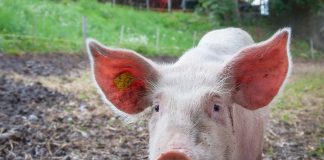





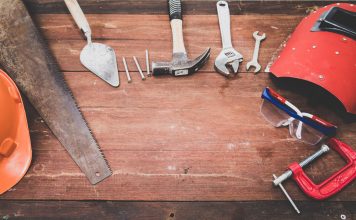
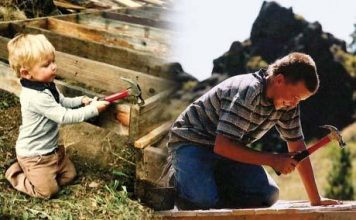
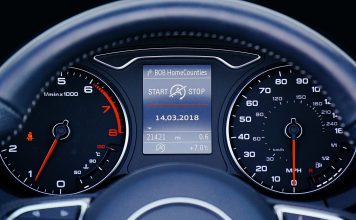
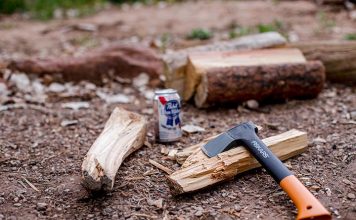
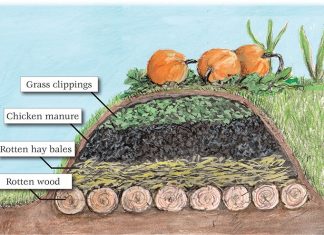

Wow. Happened upon this article in search results for gravity fed water systems. Guess the 2009 anthology needs to be added next in my collection. I love this magazine, and have been a subscriber for just 2 years. I found you from a new quest for canning skills; i read Jackie’s entire blog content from 2007 to 2019, twice, then subscribed and ordered as many anthologies as I could afford. I’ve read them all cover to cover, and will eventually get the full collection. I’m 65 now, but i never want to stop learning. You all seem like my friends now, as well as teachers and fellow freedom seekers. Fun to read this history and smile, as your goal of guiding others to purpose is met in me. Bless you and thanks.